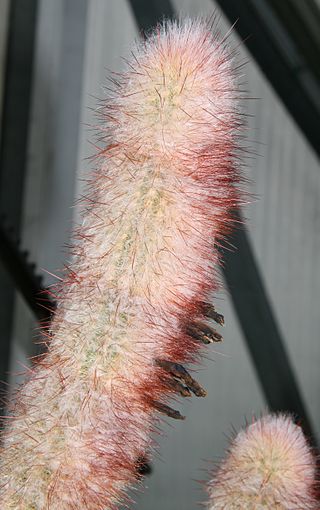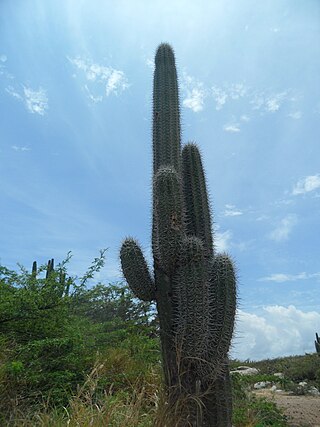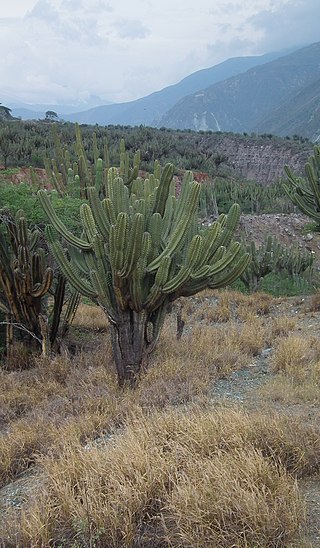
Isolatocereus is a monotypic genus of flowering plant in the family Cactaceae. The only species is Isolatocereus dumortieri that is found in Mexico.

Facheiroa cephaliomelana is a species of plant in the family Cactaceae.

Micranthocereus violaciflorus is a species of plant in the family Cactaceae. It is endemic to Brazil.

Thelocactus hastifer is a species of plant in the family Cactaceae. It is endemic to Mexico. Its natural habitat is hot deserts.

Stenocereus griseus, also known as the Mexican organ pipe, dagger cactus, pitaya, and pitayo de mayo, is a species of cactus.

Ferocactus gracilis, the fire barrel cactus, is a species of Ferocactus from Northwestern Mexico. This cactus gets its common name from the striking red coloration of its defensive spines and flowers.

Echinocereus bonkerae, also known as pinkflower hedgehog cactus, Bonker hedgehog, or short spined strawberry cactus, is a species of hedgehog cactus.

Stenocereus pruinosus is a species of cactus. It is endemic to Mexico and occurs in the states of Veracruz, Puebla, and Oaxaca.

Stenocereus stellatus is a flowering plant in the family Cactaceae that is found in Oaxaca, Mexico

Cereus fricii is a species of Cereus from Venezuela.

Stenocereus heptagonus is a species of cactus.
Stenocereus martinezii is a species of flowering plant in the family Cactaceae, native to Sinaloa in Mexico. A candelabriform cactus typically 5 to 7 m tall, it is easy to propagate from cuttings, so local people use it to build live fences.

Pachycereus weberi is a columnar cactus plant native to Mexico.

Stenocereus treleasei, commonly known as tunillo, is a species of flowering plant in the family Cactaceae, native to Oaxaca in Mexico.

Micranthocereus purpureus is a species of Micranthocereus found in Brazil.

Echinocereus papillosus is a species of cactus native to Texas and Mexico.

Stenocereus beneckei is a species of cactus in the genus Stenocereus, endemic to Mexico.
Stenocereus chacalapensis is a species of cactus in the genus Stenocereus, endemic to Mexico.
Gymnocalycium kieslingii is a species of cactus in the genus Gymnocalycium, endemic to Argentina.

Gymnocalycium neuhuberi is a species of cactus in the genus Gymnocalycium, endemic to Bolivia.

















